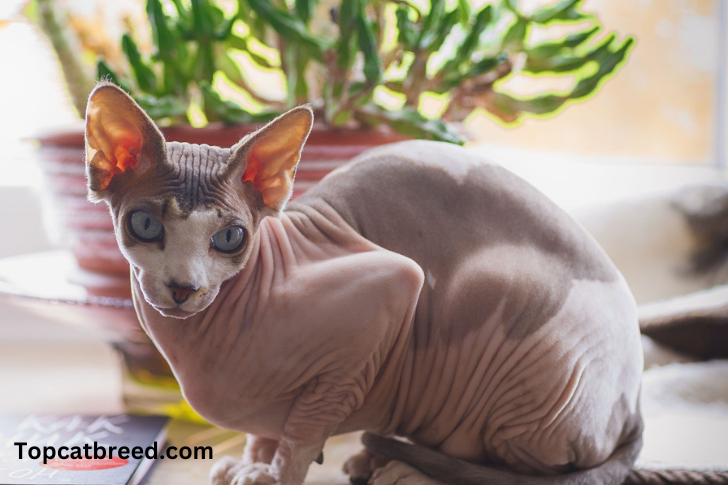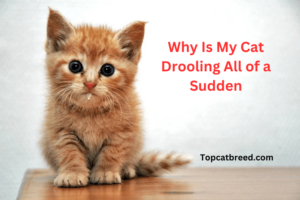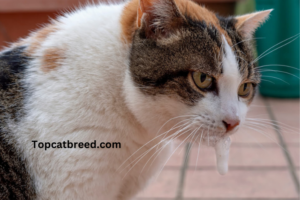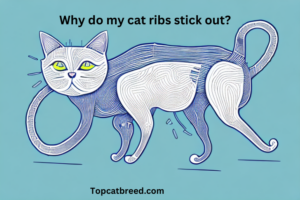Can hairless cats get fleas? This is a common concern for pet owners, especially those who share their lives with these unique and fascinating feline companions. In this article, we aim to shed light on the matter and provide you with valuable insights and information and discuss about Can hairless cats get fleas. We’ll explore the world of hairless cats and their interactions with fleas, offering four essential facts that every cat owner, whether they have a hairless breed or a furry friend, should know.
Fleas, those tiny but tenacious pests, are equal opportunity parasites – they don’t distinguish between furry and hairless cats. These creatures are equipped with sharp mouthparts for feeding on blood and powerful legs for jumping from one host to another, making them a threat to all cats, regardless of their fur coverage. However, hairless cats provide one advantage: fleas can’t hide beneath their fur, making them more visible and easier to detect.
In our exploration ways to protect your hairless cat from fleas, considering their unique needs. Learn about gentle treatments and natural repellents like essential oils. Discover effective recovery methods if your cat encounters fleas, including washing bedding and deep-cleaning your home.
Why Can the Hairless Cat Get Fleas?

Hairless cats, though they lack fur, can still fall victim to those pesky fleas. But why is that? It all comes down to fleas’ persistent nature. These tiny parasites are adaptable and opportunistic, and they don’t need fur to thrive. In fact, they’re content with any creature that provides them with a source of fresh blood
Fleas are Versatile Parasites
Fleas are tiny, external parasites and are one of the most common issues for cats and dogs. Measuring about 3mm when fully grown, these brown insects have evolved to become efficient pests. They possess specialized adaptations that enable them to latch onto pets, pierce their skin, and feed on their blood. These bites leave behind itchy, raised bumps on your pet’s skin, much like mosquito bites. Some pets are highly sensitive to these flea bites, leading to excessive scratching and potential hair loss.
Flea Adaptations for Survival
Fleas have several physical adaptations that help them thrive as parasites. Their claws are designed to grip onto your pet’s fur or skin, allowing them to stay in place while feeding. Their sharp mouthparts make it easy for them to bite and extract blood. Additionally, fleas have strong legs that enable them to jump from one host to another. These attributes make them excellent at what they do.
The Itch and Allergies
Fleas aren’t just a source of irritation due to their bites. Fleas and their saliva cause allergies in many pets. When these pets are bitten, they can experience severe itching, skin irritation, and hair loss. In some cases, allergic reactions to flea bites can cause additional health problems that require medical attention..
How to Prevent Hairless Cats from Fleas?
Prevention is key when it comes to keeping your hairless cat comfortable and flea-free. Hairless cats have sensitive skin, which means you must be cautious with flea prevention methods. Traditional topical treatments might irritate their skin, so choosing the right product is essential
Delicate Skin of Hairless Cats
Hairless cats have sensitive skin with minimal fur protection. This makes them more prone to skin irritation, especially when using topical flea medications. It’s essential to choose prevention methods that won’t cause discomfort to these delicate pets.
Non-Toxic Solutions
When it comes to preventing fleas on hairless cats, it’s crucial to opt for non-toxic treatments. Advantage flea treatment is a suitable choice because it begins to kill fleas at all life stages within 12 hours. Some owners have even found this formula to be safe for ingestion, although it has an intensely sour taste.
Oral Medications
If your hairless cat isn’t a fan of topical treatments, oral medications offer a viable alternative. Available in various forms and sizes, they cater to different cats’ needs and levels of flea exposure. Consulting with your veterinarian is key to identifying the most suitable oral preventative for your pet. This ensures a tailored approach to keeping your hairless feline friend flea-free.
Natural Deterrents
Opting for a more natural approach, many hairless cat owners turn to essential oils to keep fleas at bay. Opting for a natural approach, many pet owners choose lavender, peppermint, and lemongrass oils for their effective flea-repelling properties. Yet, it’s crucial to ensure the oils are pure and safe for your pet’s skin. Safely apply them by diluting with water before gently spreading the mixture on your cat’s skin. This diluted solution can also be used in areas where fleas may gather, such as your pet’s bed or entryways into your home. Always prioritize caution and your cat’s safety when using essential oils.
ALSO READ. 5 Best hairless cat breeds
What Should I Do If My Cat Has Fleas?
Even with preventive measures, fleas can sometimes find their way to your hairless cat. If you suspect your cat has fleas, don’t panic. There are actions you can take to assist your kitty companion.. Begin by washing all of your pet’s bedding in hot water, as this is where fleas might hide and lay eggs. Focus on cleaning your cat’s favorite napping spots, like window seats and couches.
Detecting Fleas
Addressing a flea infestation begins with identification. Look out for signs such as excessive scratching, red and irritated skin, and the presence of tiny, brownish insects on your cat’s fur. These common symptoms indicate the need for prompt attention to ensure your cat’s comfort and well-being. Flea eggs can appear as small white ovals attached to your pet’s fur.
Immediate Action
If you suspect your hairless cat has fleas, take immediate action. Start by treating your cat using safe and appropriate flea control products recommended by your veterinarian. Simultaneously, focus on cleaning your home to eliminate fleas and prevent infestations.
Cleaning Napping Spots
Your cat likely has favorite resting spots. Ensure these areas are kept free from fleas by washing any bedding, cushions, or blankets in hot water. This step will help remove any fleas or eggs hiding in these cozy spots.
Dealing with Carpets and Floors
Fleas can hide in carpets and floors, so a deep clean is essential. Regularly vacuum your home, including carpets and hard surfaces, to remove any fleas, eggs, or larvae. Consider using flea removal sprays on carpets to ensure thorough treatment. Long-Lasting Fleas . leas can linger in your home for weeks or even months after your pet appears flea-free. Thus, maintaining a clean living environment and providing your cat with ongoing flea prevention is key to avoiding future infestations.
- All of your pet’s bedding should be washed in hot water.
- Wash your favorite napping spots (window seat, couch, end of bed).
- Perform a thorough cleaning of the carpet.
- Consider utilizing a flea eradication carpet spray.
- Sweep all hard surface floors.
- Toys for pets should be washed in hot water.
Flea Treatment for Hairless Cats
Selecting the Best Flea Treatment for Your Hairless Companion .When addressing fleas on a hairless cat, it’s vital to customize the treatment according to their distinct requirements. This journey usually starts with a discussion with a veterinarian specializing in feline dermatology. This tailored approach ensures the most effective and safe solution for your unique hairless feline friend. Your vet will assess your cat’s skin sensitivity, any existing medical conditions, and overall health to make the most informed treatment recommendations.
Consulting Your Vet
A key starting point in addressing fleas on hairless cats is seeking professional guidance. Your veterinarian is best equipped to determine the most suitable treatment approach for your cat’s unique situation. This personalized evaluation considers your cat’s skin sensitivity, allergies, and any other individual considerations.
- When dealing with fleas on a hairless cat, your journey begins with a consultation with a veterinarian who is well-versed in feline dermatology.
- A vet will assess your cat’s specific needs, taking into account their skin sensitivity and any existing medical conditions.
Topical Treatments
Topical flea treatments are a common choice for many cat owners due to their proven effectiveness. They are usually simple to apply and provide long-lasting protection. However, for hairless cats, it’s essential to select products specifically designed for sensitive skin. Additionally, always follow the application instructions and, when in doubt, consult your vet for product recommendations.
- Some hairless cat owners opt for topical flea treatments as they are effective and easy to apply.
- Select products designed for sensitive skin, as hairless cats are more prone to skin irritation
Oral Medications
Oral flea medications provide an alternative to topical treatments. These medicines are given by mouth, which is great for cats with sensitive skin.
Flea medications for cats come in various forms, such as pills or chews. Your veterinarian will determine the appropriate dosage and frequency to ensure your cat’s safety and provide the best protection against fleas. Trust your vet’s guidance to keep your feline friend safe and flea-free.
- Top of Form
- Oral flea medications provide an alternative to topical and are administered by mouth.
- They are well-suited for cats with sensitive skin and are available in various forms.
Natural Flea Deterrents
For those leaning towards natural flea control, essential oils like lavender, peppermint, and lemongrass can be effective. Ensure the oils are high quality and safe for your cat’s skin, as not all are feline-friendly. Dilute the essential oil with water and gently spray the solution on your cat. This natural method can also be applied in areas where fleas might gather, like your pet’s bed or entryways to your home.
- Natural Flea Control: Essential oils such as lavender, peppermint, or lemongrass can be used for a natural approach.
- Safety First: Ensure the essential oils are high quality and safe for your cat’s skin, as not all oils are feline-friendly.
Monitoring and Regular Maintenance
implementing a flea treatment, it’s crucial to monitor your hairless cat for any signs of discomfort or adverse reactions. While the chosen treatment is meant to eliminate fleas, it’s also essential to maintain regular communication with your vet. This ensures that any necessary adjustments can be made to keep your cat flea-free while considering their individual needs and comfort.
- After implementing a flea treatment, it’s crucial to monitor your hairless cat for any signs of discomfort or adverse reactions.
- Maintain regular communication with your vet to make adjustments as necessary to keep your cat flea-free.
FAQS
1-Do hairless cats get cold?
Yes, hairless cats can get cold more easily than cats with fur. It’s essential to provide them with warm environments and cozy spots to help regulate their body temperature.
2-Are hairless cats good pets?
Yes, hairless cats can make wonderful pets Hairless cats are known for their affectionate nature and unique appearance, often forming strong bonds with their human companions. Prospective owners should be mindful of specific care needs, including skincare and temperature considerations, to ensure a happy and healthy relationship.
3-How much does hairless cats cost?
Hairless cats can range from a few hundred to a couple of thousand dollars, depending on factors like breed and age. Opt for a reputable breeder for a healthy and joyful feline companion. In numbers, that’s anywhere from $200 to $2,000.
4-What do hairless cats smell like?
Hairless cats typically have a mild, subtle scent that is not very strong or unpleasant. Regular bathing helps keep any odors in check.
5-Do hairless cats get sick easily?
Hairless cats, though not naturally more susceptible to illness, can feel temperature changes more intensely due to their lack of fur. Ensuring proper care and providing a suitable environment are crucial for maintaining their health and overall well-being.
CONCLUSION
In conclusion, Wrapping it up, hairless cats are truly one-of-a-kind and captivating companions. Grasping their distinct requirements, like their subtle scent, tendency for pimples, and sensitivity to temperature, is key for their overall well-being and forming a strong connection with their owners. Offering them the right care, including regular baths and prompt veterinary care when necessary, is essential to keep these special feline friends healthy and content.




